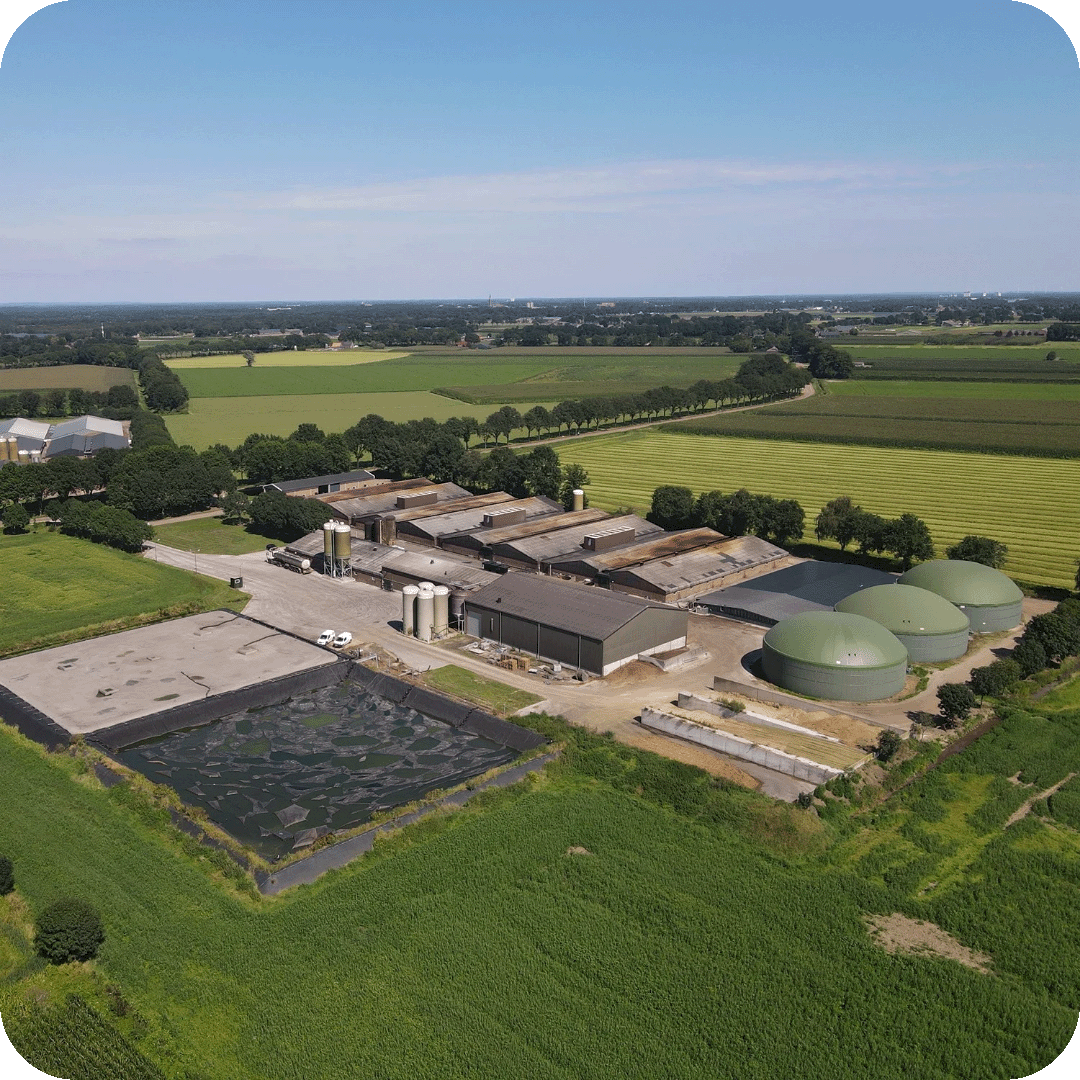

'It’s time. We’re in the age of urgency.’ This year’s New York Climate Week theme underscores the critical need to intensify our climate mitigation efforts and unite as an industry to overcome the barriers holding us back.
In its latest update, Science Based Targets initiative has showed a more favorable position towards carbon credits used for ‘Beyond Value Chain Mitigation’ (BVCM) rather than using carbon credits for offsetting emissions (i.e. not reducing emissions first) that could have instead been reduced.
While we acknowledge the importance of maintaining robust standards and are encouraged by their continuous improvement, we cannot remain idle as the time to meet the Paris Agreement targets slips away.
One significant way businesses can make a difference for their own decarbonisation and for the planet is by proactively engaging in the Voluntary Carbon Market (VCM). Below we highlight 6 key reasons carbon credits are vital for advancing decarbonisation efforts globally.
1. Carbon credits are essential to meet Paris Agreement goals
Carbon credits provide a flexible mechanism for the reduction of hard-to-abate emissions, allowing for a market-based approach that enables entities to meet their reduction targets cost-effectively.
According to Forest Trends' Ecosystem Marketplace, carbon credits were responsible for reducing approximately 95 million metric tons of CO2 in 2020 alone, equivalent to taking 20.6 million cars off the road for a year.
By utilising different types of carbon credits, such as removal, reduction, and avoidance credits, organisations can address various emission sources and goals.
Removal credits involve directly capturing and storing carbon dioxide from the atmosphere, reduction credits pertain to decreasing emissions through improved efficiency and technology, and avoidance credits focus on preventing potential emissions by adopting alternative practices.
.png?width=1920&height=1080&name=Read%20more%20(7).png)
Each type of credit that is credible and has a high impact plays a crucial role in contributing towards the targets set by the Paris Agreement, ensuring companies can take immediate actions towards tackling unavoidable emissions.
This way, carbon credits encourage global participation by providing a system that can be utilised worldwide, ensuring that all countries, regardless of economic status, can participate in emission reduction efforts.
In addition, carbon credits facilitate financial transfers by allowing developed countries to support climate action in developing nations through the purchase of credits, fostering global equity in climate mitigation.
2. Carbon credits can help neutralise the emissions we don’t yet have solutions for
Removal credits, though they currently constitute only a small fraction of the carbon market, play a vital role in genuinely neutralising carbon emissions.
These credits involve paying entities to remove CO2 from the atmosphere and store it securely, thereby providing a reliable method for addressing emissions that we have no immediate solutions for. Examples of removal projects include: carbon capture and storage projects; afforestation and reforestation projects; ocean-based carbon removal projects, etc.
This approach ensures that companies can take immediate action against their carbon footprint while longer-term, more permanent solutions are being researched and developed.
3. Carbon credits are an important VCM instrument to achieve net-zero
Carbon credits are a key component in the VCM, allowing businesses to decarbonise their operations more efficiently.
A recent study conducted by Forest Trends’ Ecosystem Marketplace indicates that companies that utilise carbon credits reach net zero faster. Companies engaging in the voluntary carbon market are reducing their own emissions more quickly than their peers.
In fact, they are 1.8 times more likely to be decarbonising year-over-year and 1.3 times more likely to have supplier engagement strategies. The latter is an indicator that companies buying carbon credits are also actively working with suppliers, employees, and customers to address climate impacts.
The voluntary nature of the market encourages private sector participation, allowing businesses to take proactive steps towards net-zero without waiting for regulatory mandates. By participating in the VCM, entities contribute to a larger pool of climate action, scaling efforts and amplifying overall progress towards net-zero goals.
4. Carbon credits are a financial mechanism to support transparent and high-impact climate action globally
Transparent and high-quality carbon credits enable critical finance to flow to decarbonisation projects around the world, providing a financial incentive for projects that reduce or remove greenhouse gas emissions and making climate action economically viable.
Recent research by Ecosystem Marketplace finds evidence of a market-wide shift in the voluntary carbon markets (VCM), with demand concentrating around high-integrity, high-quality carbon credits that have holistic co-benefits beyond the mitigation of greenhouse gas emissions.
Transaction data analysed in the report show a massive 82% leap in average carbon credit prices between 2021 and 2022, paired with a drop in overall transaction volumes. These dynamics suggest a market consolidating around a smaller but committed set of buyers willing to pay premium prices for higher quality credits. Demand is particularly high for nature-based credits that are certified for co-benefits and Sustainable Development Goals.
This growing interest in high-quality credits underscores the importance of rigorous certification and verification processes, which ensure that the claimed emissions reductions are real, measurable, and verifiable, promoting transparency and trust in the system.
GoodZero is committed to maintaining high standards of integrity and impact through our meticulous GoodCriteria evaluation process. This framework provides a clear standard for evaluating and selecting high-quality carbon credits, ensuring that they contribute meaningfully to global climate goals.
High-impact carbon credits often fund projects with significant climate benefits, such as reforestation, renewable energy, and energy efficiency improvements. These projects not only mitigate greenhouse gas emissions but also contribute to broader environmental and social goals, making them a vital tool in global climate strategy.
5. Carbon credits provide economic and social benefits for communities involved in projects
High-quality carbon credits are not just an environmental tool; they are a catalyst for economic growth and social development in communities worldwide. By funding projects that mitigate carbon emissions, carbon credits help create a ripple effect of benefits that transform local economies and improve quality of life.
The African Clean Energy initiative, the Dutch Methane Recovery Project, CarbonCure, and Norway's Trefadder reforestation project are innovative examples of climate action that not only reduce carbon emissions and enhance environmental sustainability but also improve public health, create jobs, and strengthen local economies through sustainable practices.
6. Carbon credits can increase climate ambition across industries
Access to carbon credits empowers industries to set more ambitious climate goals by providing a flexible mechanism to achieve them. Researchers have found that the global use of carbon markets could nearly double climate ambition relative to current Paris pledges (NDCs) from 2020 to 2035, without increasing total costs compared to a scenario without international markets.
The flexibility of carbon credits encourages innovation and collaboration, allowing businesses to support diverse projects like reforestation, renewable energy, and community-based conservation. Protecting tropical forests offers substantial low-cost mitigation potential, making reduced deforestation a key driver of increased climate ambition through international carbon markets.
As global ambition rises, the role of these markets, including those targeting deforestation, becomes even more critical. If countries scale up their Paris pledges to limit warming to 2°C, the volume and value of international transactions could roughly double and increase ten-fold, respectively.
In this scenario, carbon markets could lower costs by two-thirds and enable one-third more reductions at the same cost as without international markets, keeping the 1.5°C warming limit within reach.
It’s time to lead. It’s time to push the needle on climate.
There is no time to lose—starting now, we must take responsibility and harness the power of the Voluntary Carbon Market (VCM) and high-impact carbon credits to meet the urgent targets of the Paris Agreement. By embracing these tools, we can drive meaningful action, inspire global change, and secure a sustainable future for generations to come.
Together, we can turn ambition into action, transforming our climate goals into tangible, impactful outcomes. Let’s seize this moment to lead with courage, innovation, and unwavering commitment.
Join us in this vital mission towards building a #BetterWorld — contact us today to kickstart your tailored decarbonisation journey.
More news and blogs

GZ | News & Blogs | 03-06-2024
Reducing and offsetting – 3 reasons you should embrace both to reach your net-zero targets
Read this story
GZ | News & Blogs | 18-04-2024
GoodZero and CIRRO: Strategic Partnership for a Greener Tomorrow
Read this story
GZ | News & Blogs | 19-03-2024
A perfect fit : How Sipsmith aligns emissions offsetting with their core values
Read this story
Ready to explore
more?
more?






.jpg)
